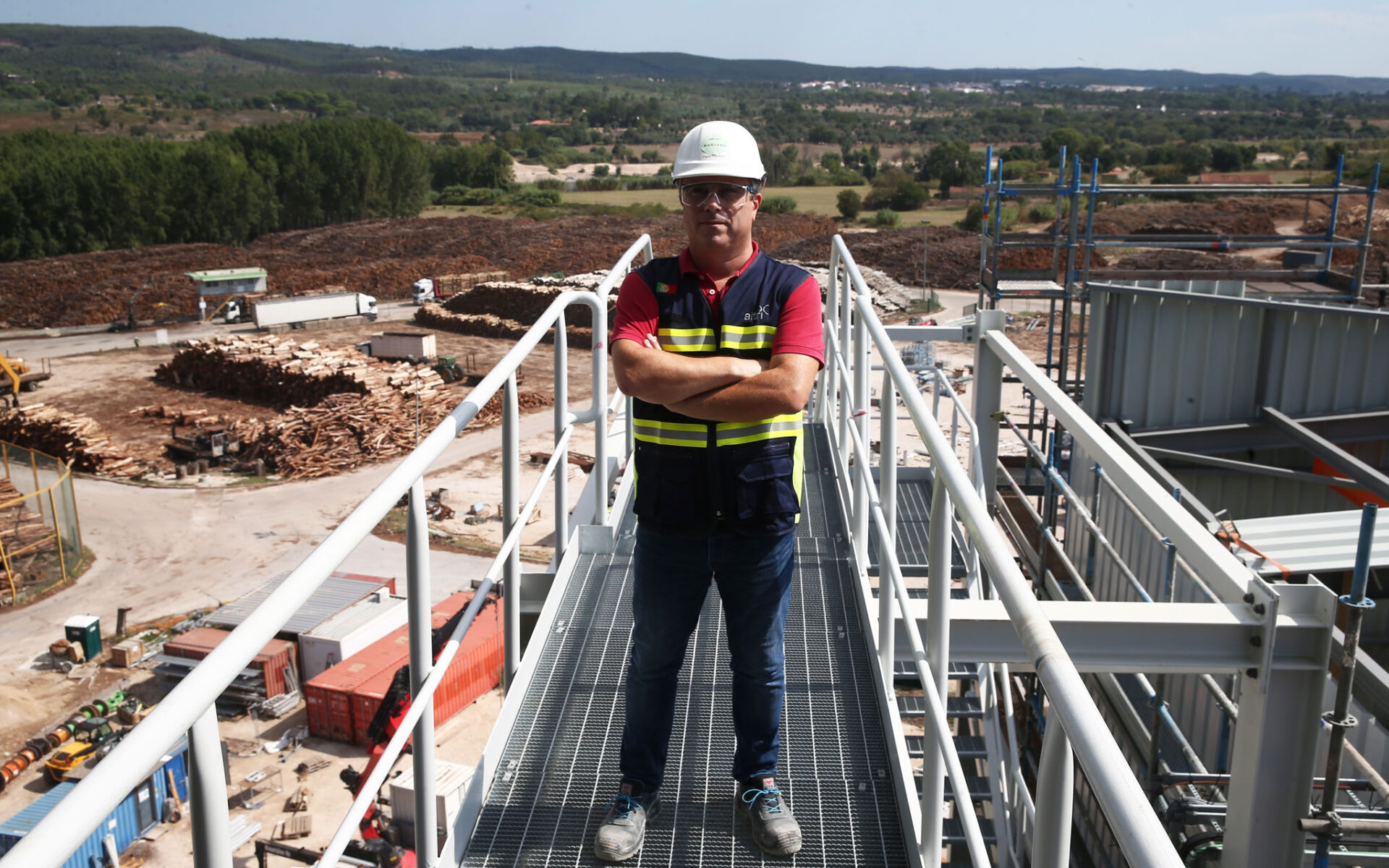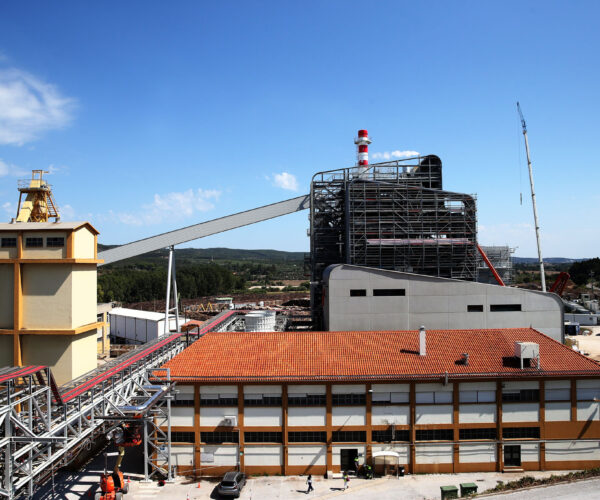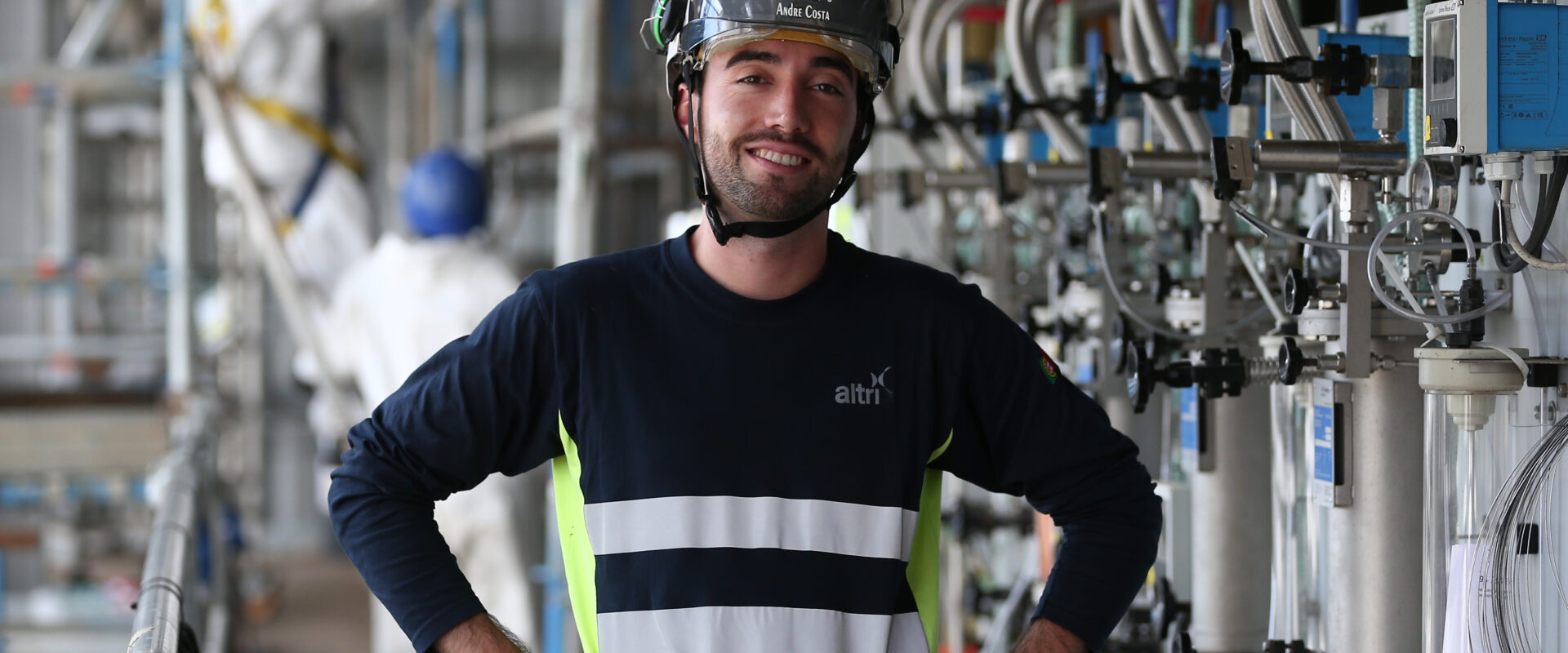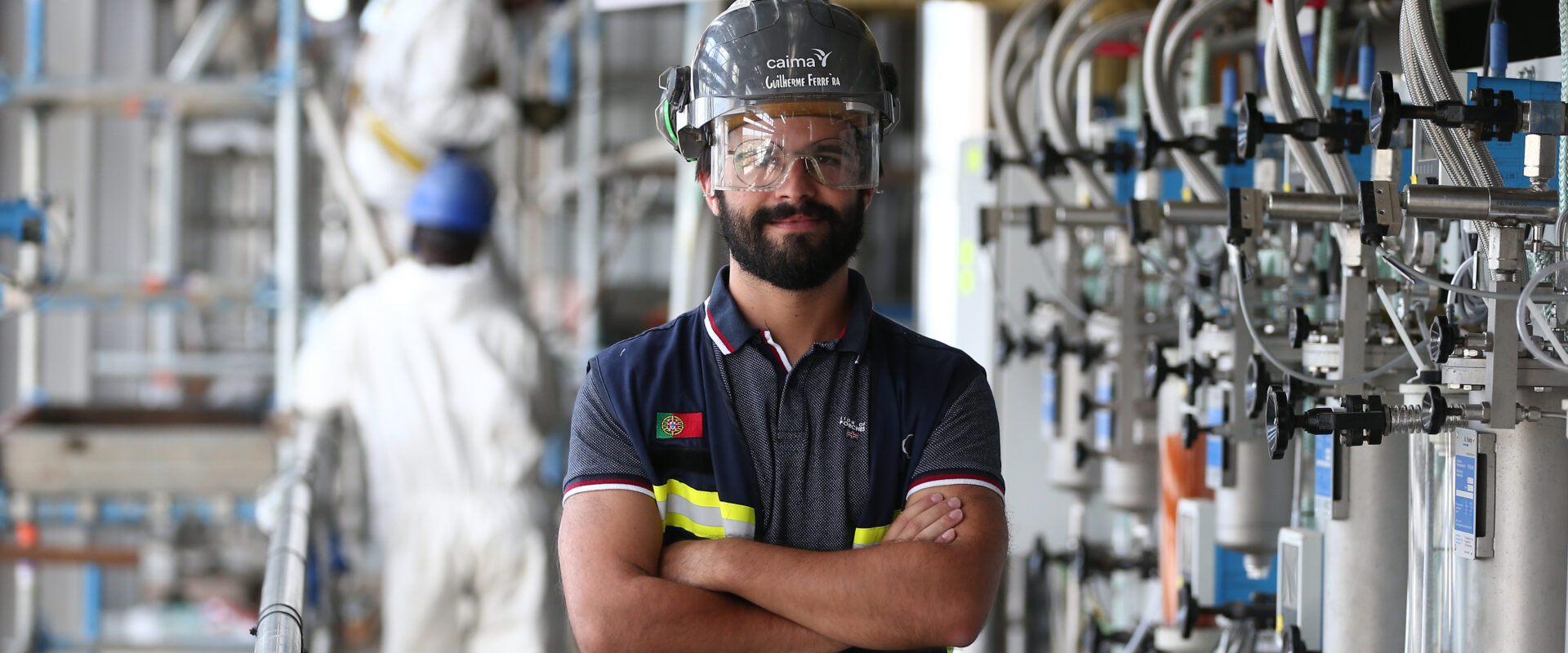Caima Go Green: The future begins now
Welcome to the first Iberian factory producing cellulose fibers free from fossil fuels.
A critical aspect of the energy transition is decarbonization, involving the gradual reduction or elimination of the use of fossil fuels, a significant source of carbon emissions, and adopting low or zero-carbon energy sources. In 2024, a new future awaits Caima. With the new biomass boiler – Caima Go Green – Caima discontinues the use of fossil fuels in its production process, becoming one of the first in the industry to achieve this historic milestone.
This project will maximize the generation/sale of electrical biomass, we will ensure the factory’s steam needs, allowing for increased production levels. This investment will also enable the implementation of innovative specialty projects, such as the production of acetic acid and furfural, recovering these green compounds from process streams that can be marketed with high added value. A forward-looking project considering the future, based on the pillars of innovation, sustainability, and continuous improvement associated with the circular economy.
A future beyond fossil fuel
Altri has a new biomass plant at Caima’s facilities, to produce steam and electricity through a cogeneration system.

Using biomass to ensure the factory’s steam needs are met; ending the consumption of natural gas (carbon neutrality); maximising the generation/sale of electricity, by exhausting the condensing turbine’s installed capacity; substituting the existing biomass boiler, which is in poor condition, with a new unit that has a better environmental performance; creating reserves for future steam needs and putting conditions in place to exhaust the installed capacity at the GreenVolt plant. These are the main goals which led to the decision to roll out the Caima Go Green project.


The investment decision and the plant’s engineering and construction phase took place during a period of great socioeconomic instability, namely the Covid-19 pandemic, with significant and at times inexplicable increases in raw materials prices, the war in Ukraine, and more recently, high inflation.
All of this instability has been challenging progress, chiefly in terms of planning and meeting the initial budget. It should be pointed out that delivery times and costs of material are not what they were three years ago.
Summary of the plant’s main features:
- Deployment area: 2600 m2;
- Chimney height: 50 mt;
- Max. height of boiler building: 40 mt;
- Thermal power:76 MWt ;
- Steam production: 90 t/h (25 kg/s, 90 bar(a), 480 °C);
- Boiler’s thermal efficiency: 88,5 %;
- Steam flow at turbine inlet: 48 t/h;
- Generator output 4,95 MWe;
- Generator voltage: 3,3 kV.
The biomass plant was designed, planned and built based on the latest concepts and technologies, in order to guarantee the greatest reliability and economy; maximum availability; a high degree of automation; minimised environmental impact; fulfilment of the most rigorous safety requirements for people and facilities and strict compliance with hygiene standards and best practices.
The team assembled to implement this project comprises employees from the group’s three industrial units, to encompass all the specialities and functional areas. The experience and knowledge brought to the project by each member of the team were decisive in progressing the work under what have, at times, been adverse circumstances.
From an environmental standpoint, the project will enable full compliance with the Best Available techniques (BAT) and Associated Emission Values (AEV-BAT), as considered in the BREF BAT conclusions, applicable to boilers that use biomass as fuel, namely new facilities with a thermal power lower than 100 MW.


This new biomass plant will have a 76 MWt thermal power, and will operate producing high-pressure steam in a fluidised bed boiler, which will then be fed to an extraction condensing turbine to produce electricity in the corresponding generator. The remaining steam will be sent to Caima’s high-pressure collector, to exhaust the capacity of the TG5 condensing turbine.
In short, the boiler is based on fluidised bed technology, in other words, on creating a suspended mixture of solid particles and gas, obtained by blowing primary air through the bed material – in this case a layer of sand – which lies on the bottom of the furnace, made up of a horizontal pressure tube grate, equipped with an appropriate air injection system. When in operation, the grate tubes are filled with water (hydro beam grate), thus the bed reaches more moderate temperatures than with other technologies.
The steam generated in the boiler will be expanded in a turbine with extractions and condensation. The turbine is coupled with a 4.95 MWe electric generator. In addition to the final exhaust for condensation, the turbine has two intermediate steam extractions to be used as feed steam for the existing TG5 turbine.
It should be noted that special attention was given to the buildings’ architectural features and the visual aspect of the construction reflects a vision where form follows function, with care taken to ensure that the proportion, colour and texture relate to the surroundings.
The project does not significantly alter noise levels, but air quality will improve when the current boiler is withdrawn from service.
The electricity licensing process is currently underway for the new plant switch-on, and in tandem with this, to increase the connected load to the public grid {Rede Elétrica de Serviço Público (RESP)} from 9,200 kVA to 11,040 kVA. The project implementation time was around 22 months, from when the decision was made with the purchase of the boiler in December 2021, through the purchase of the turbine in May 2022 and following the DGEG’s awarding of the production licence (also in May 2022), all the way to the facility being brought on line. The continuous steam production started in November 2023, and the electricity generation in the new turbogenerator began in January 2024.
A new life for Caima
The Caima Go Green project was well accepted by everyone. The investments made have brought a new forward-thinking energy / mindset. A better future for the company and for the region.
The boiler’s new operators cite many reasons why this feels like a new page is being turned in the company’s 130-year history. A brighter and more prosperous new future for all. According to the workers we spoke with, the main reason is “the chance to more efficiently increase the factory’s production.” Caima’s transformation into a biorefinery which employs the latest technology is what makes it a pioneer which will derive maximum benefit from the raw materials it uses. Guilherme Ferreira, the energy process assistant technician, says they are “broadening the range of value-added products the factory produces, by minimising the waste created and decreasing Caima’s exposure to market fluctuations.”
He was able to monitor some of the operations involved. He didn’t oversee them from start to finish, but was involved in the chemical cleaning of the boiler, which allowed him to “begin to grasp the dimension of the project and better understand the facility.” Guilherme Ferreira’s involvement was truly begin during the start-up phase. He is one of the employees responsible for monitoring the operation of the boiler. Now is the time to get it up and running.
André Costa is in training to be the factory coordinator. The Caima Go Green project represents an opportunity, a step upwards. Furthermore, production will become more sustainable, it will become self-sufficient in terms of energy, and more competitive which, André Costa believes, “opens the door to new projects”. For all these reasons, the kick-off of the Caima Go Green project is “an historic milestone and a strategic vision for the future.”
The company’s plant operator, Pedro Grave, says he “had no idea of the magnitude, because it’s one thing to see the blueprint but quite another to see the project at full scale.” Pedro acknowledges that this is the third boiler installation he has witnessed, but the dimension and technological evolution “have taken a great leap, which can be seen in all the machinery which feeds the biomass.” It should be noted that it is “a boiler with a different goal and a clear potential.” According to the plant operator, the technological leap taken by Caima Go Green project enables an increase in production, lower energy consumption, reduced gas emissions and improved safety.





